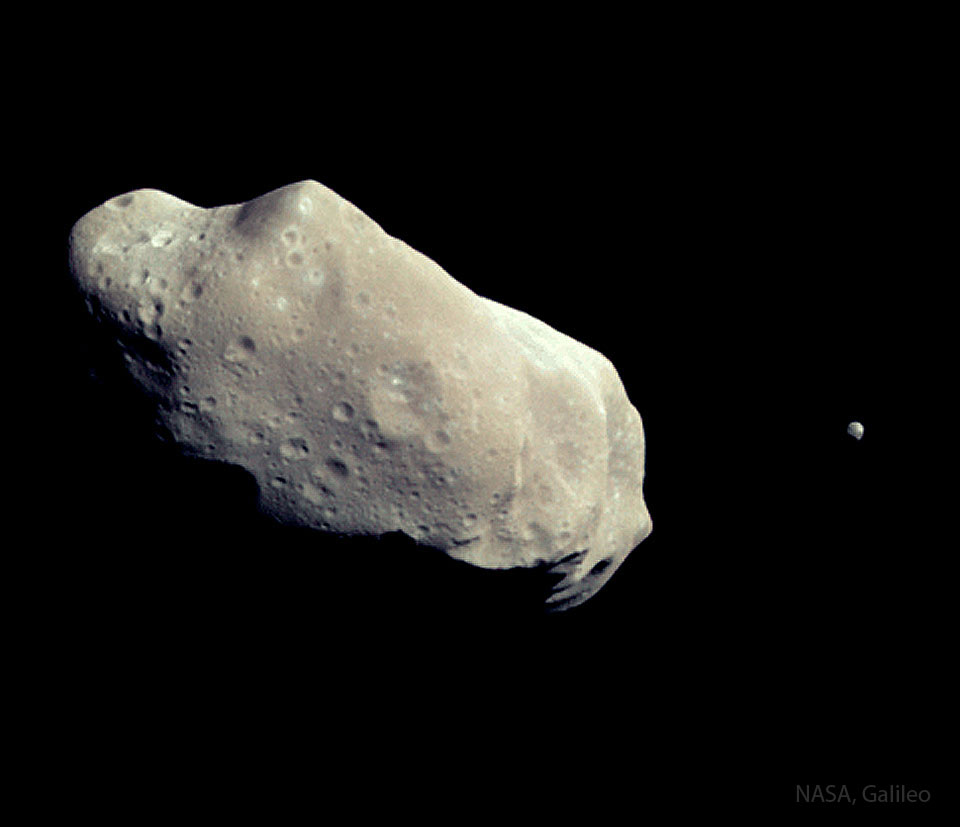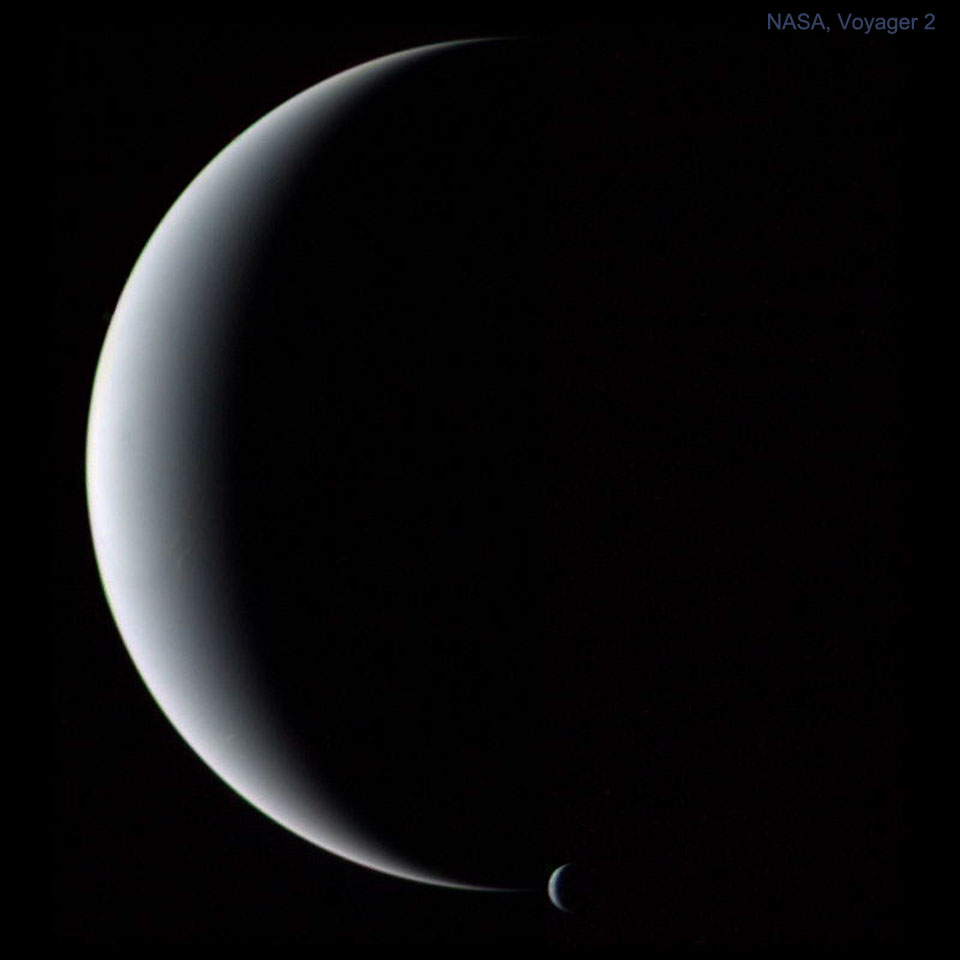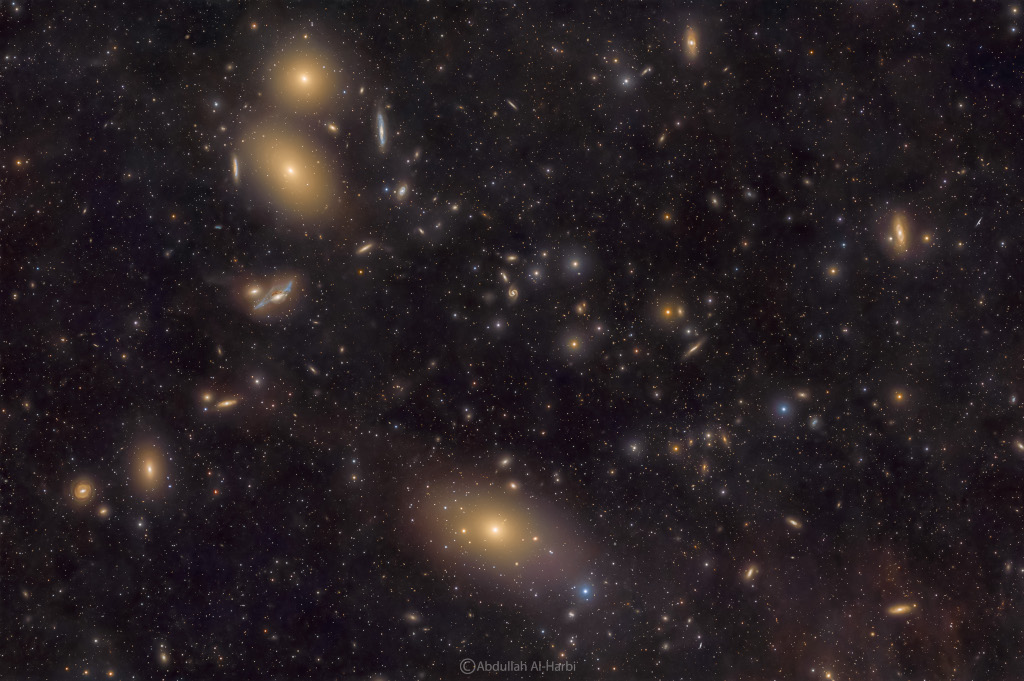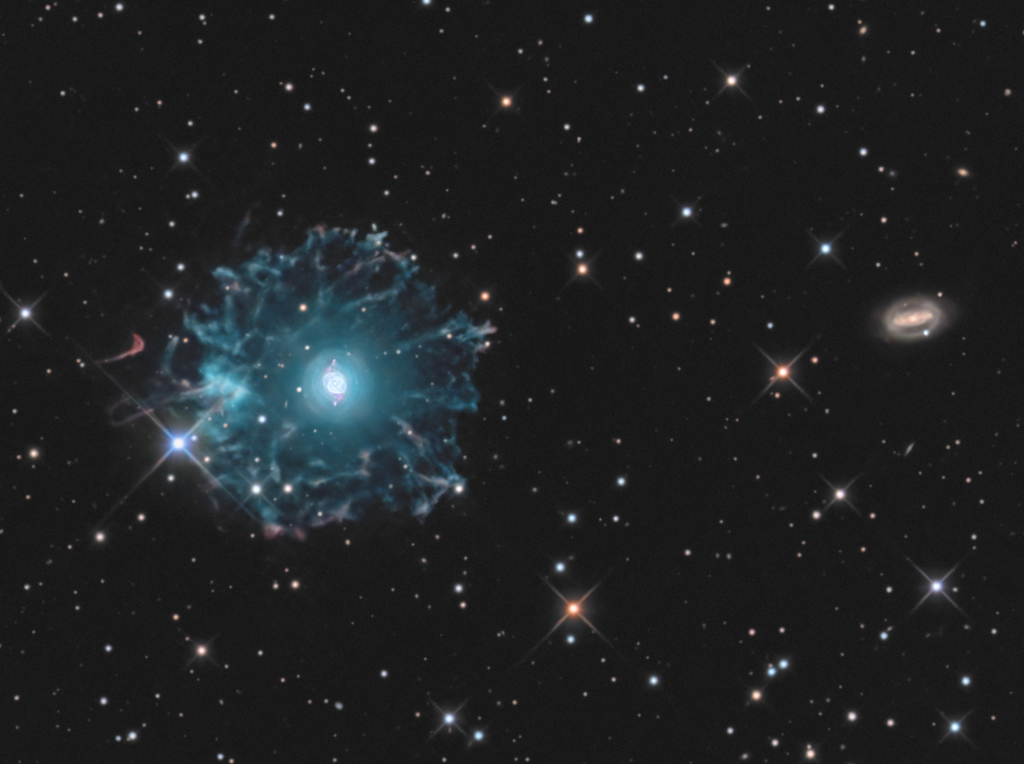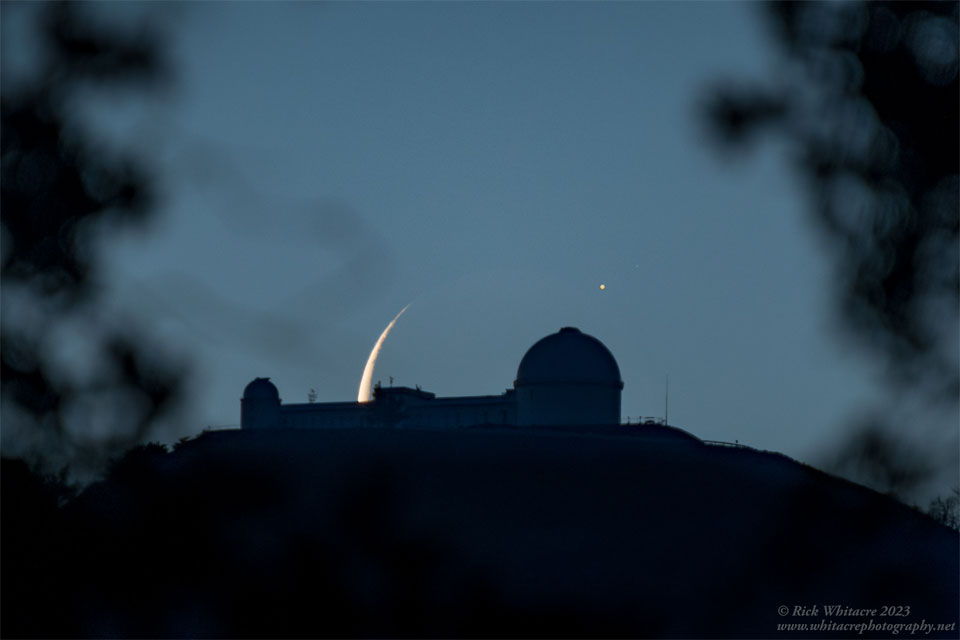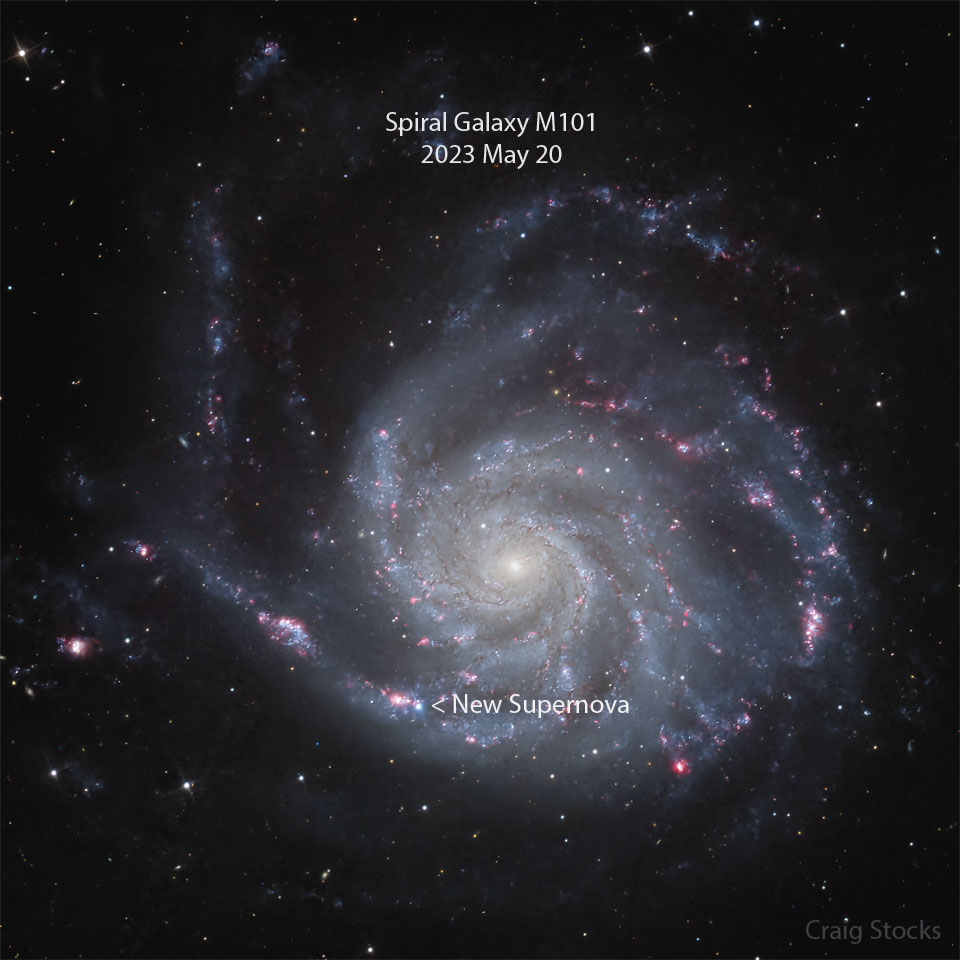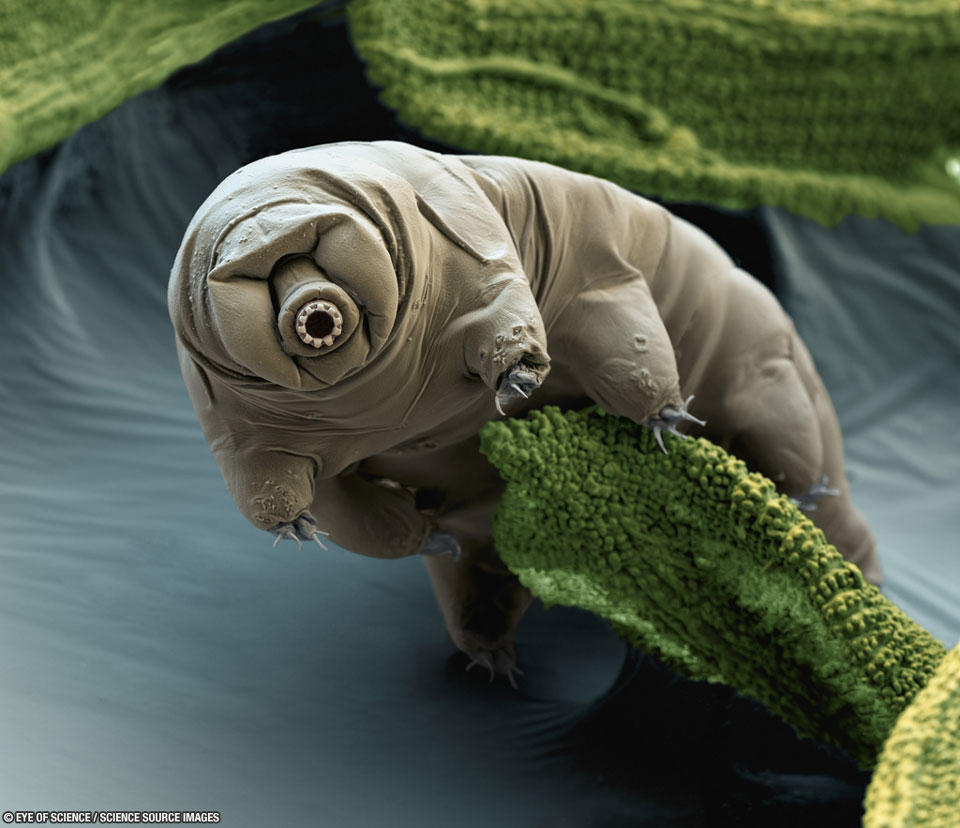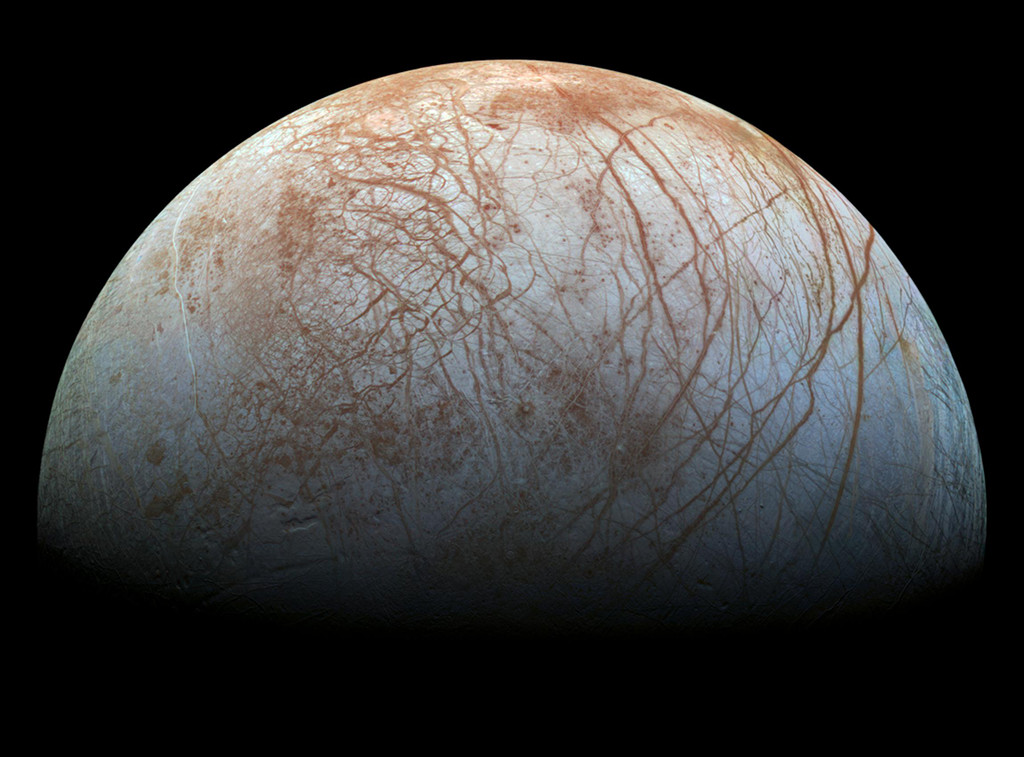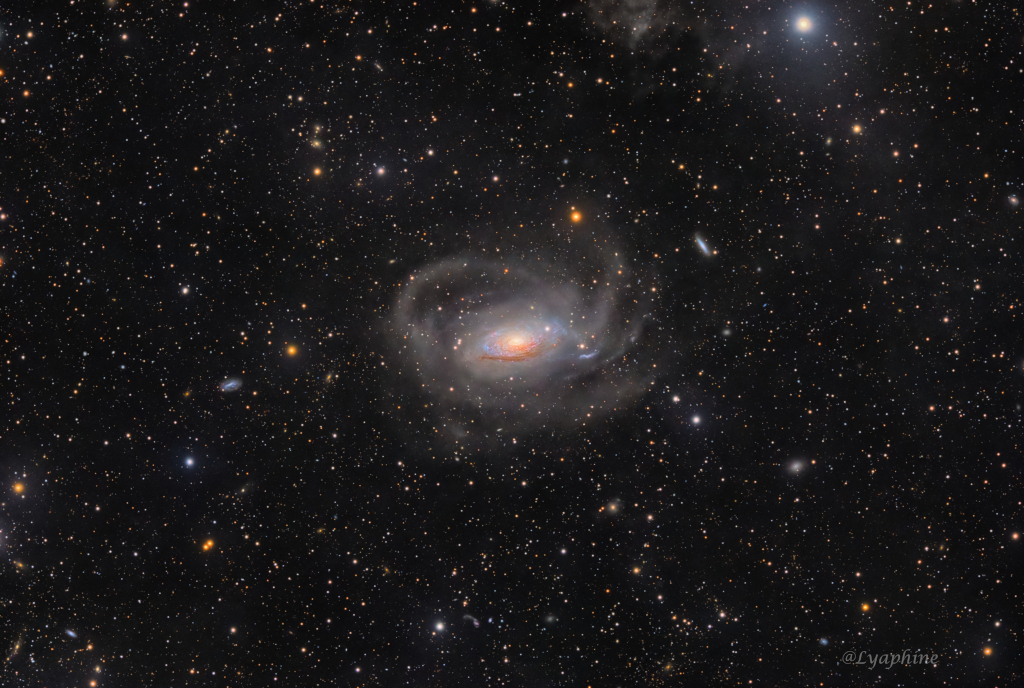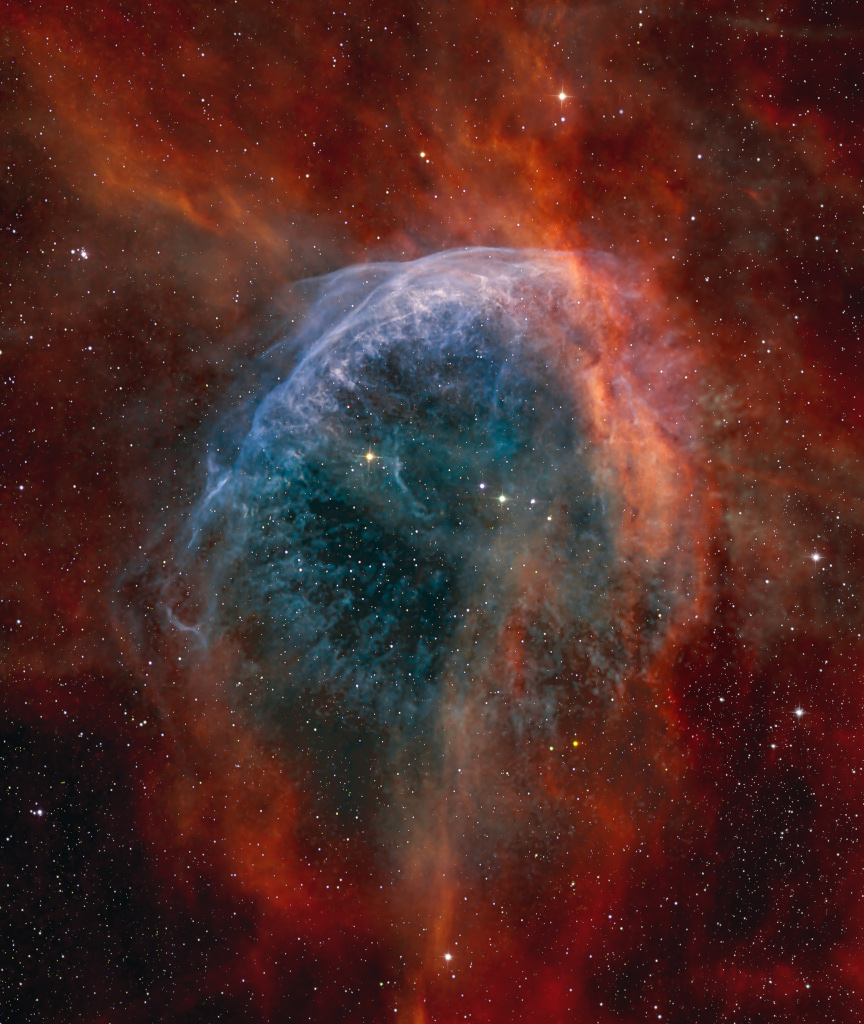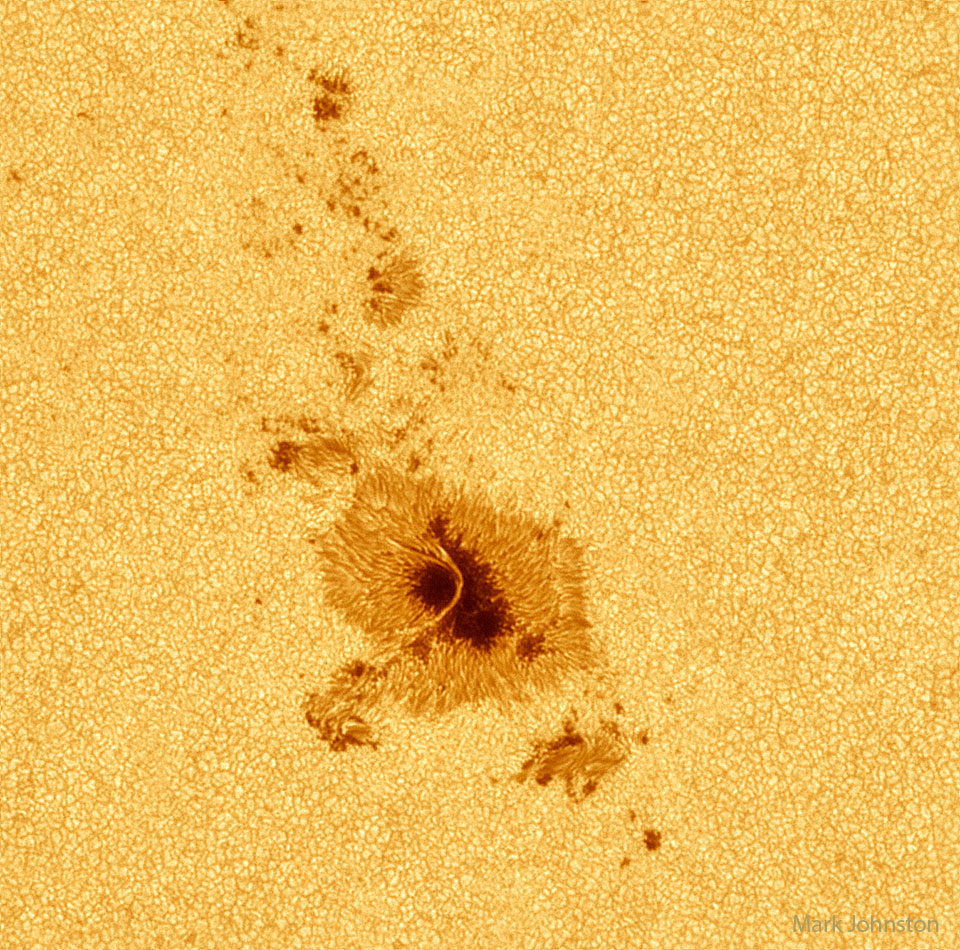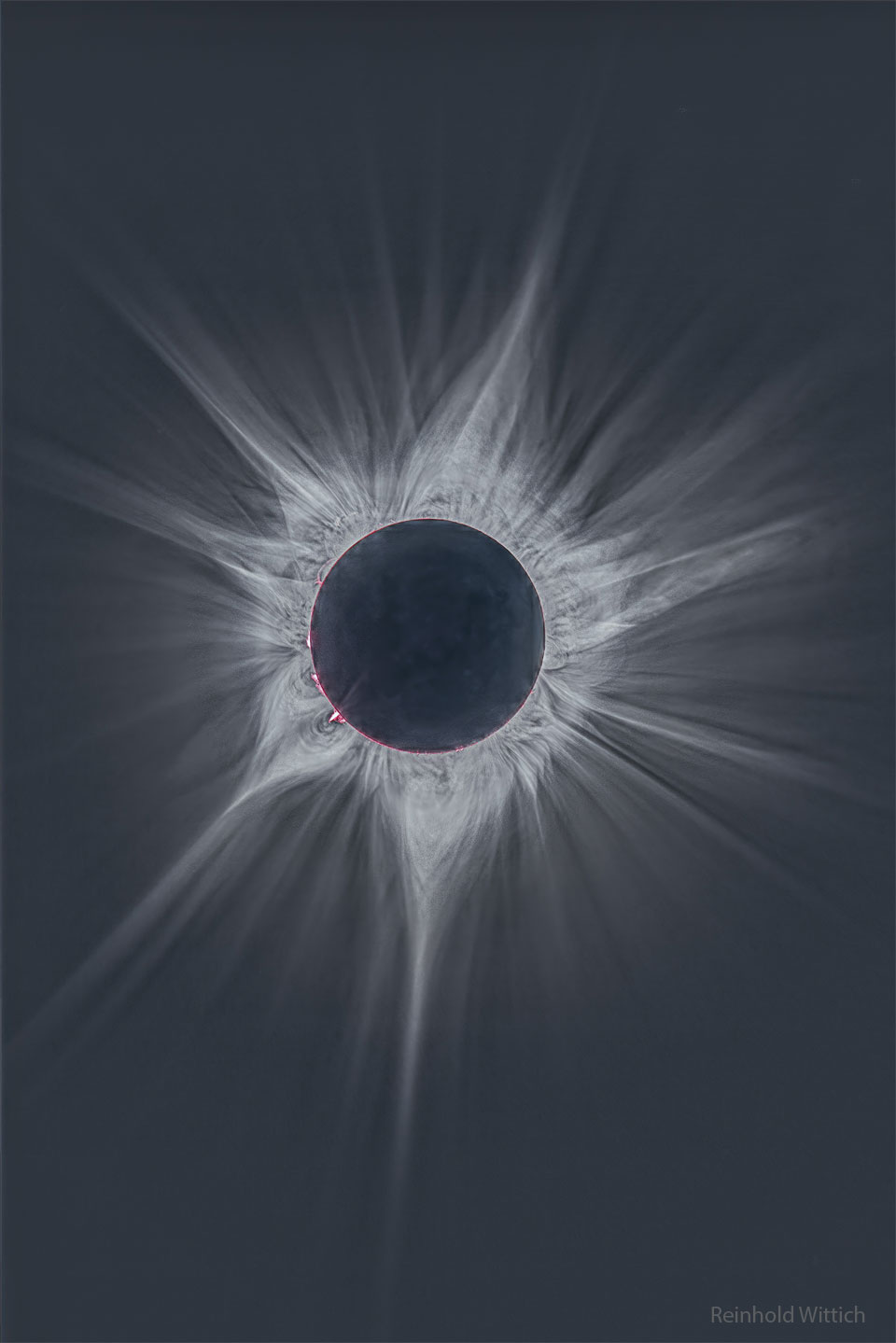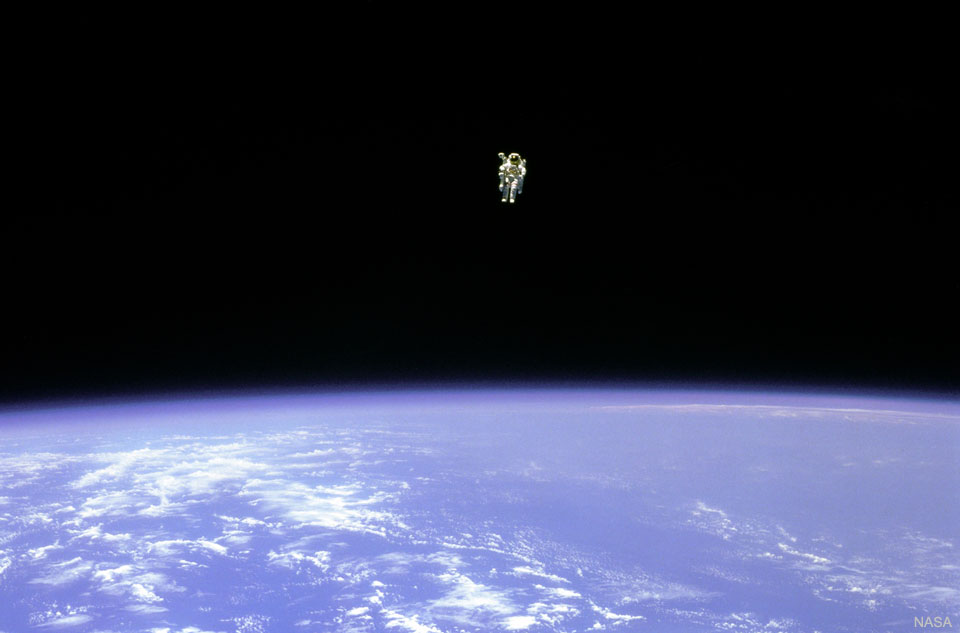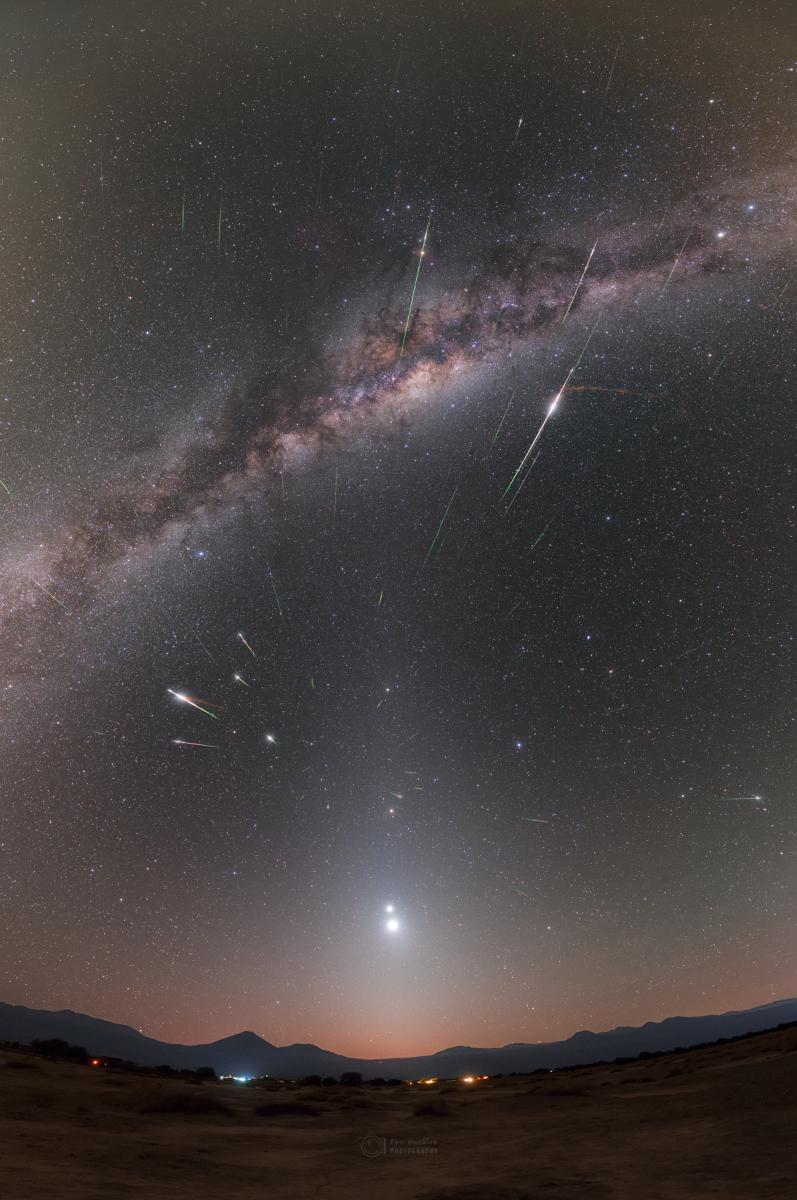
Big storms are different on Jupiter. On Earth, huge
hurricanes and colossal
cyclones are centered on regions of low pressure, but on Jupiter, it is the high-pressure, anti-cyclone storms that are the largest. On
Earth, large storms can last weeks, but on
Jupiter they can last years. On Earth, large storms can be as large as a country, but on Jupiter, large storms can be as large as planet Earth. Both types of storms are known to exhibit
lightning. The
featured image of Jupiter's clouds was composed from images and data captured by the robotic
Juno spacecraft as it
swooped close to the massive planet in August 2020. A swirling
white oval is visible nearby, while numerous smaller
cloud swirls extend into the distance. On Jupiter, light-colored
clouds are usually higher up than dark clouds. Despite their differences, studying storm clouds on distant Jupiter provides
insights into storms and other weather patterns on
familiar Earth.Â
https://apod.nasa.gov/apod/ap230523.html ( May 23, 2023)






